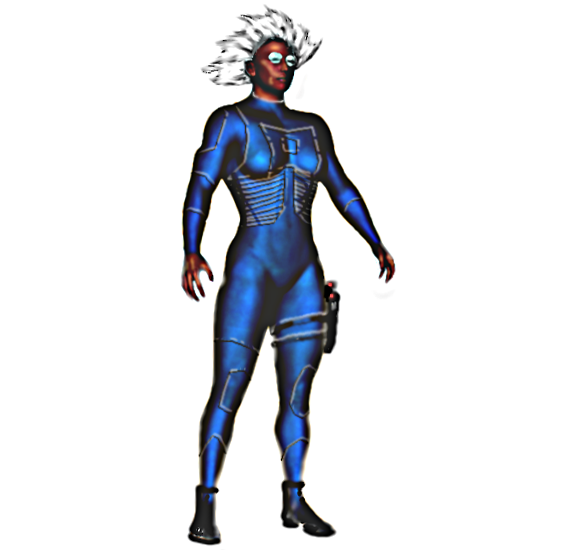BY LETTER
Morrigans
Minervan subclade optimised for combat | |
 Image from Steve Bowers | |
| Many Morrigans are employed as bodyguards, and may appear comparatively non-threatening compared to other clades that often fill this role | |
Morrigans are a recent (10,343 AT) off-shoot of Minervans. They are (discreet) combat tweaks based on the Minervan platform meant as protectors externally indistinguishable from their fellow Minervans and Athenaeids. They are engineered with radically tougher tissues and bones, and have some distinctive internal features: double the number of ribs (overlapping to form a gapless but flexible ribcage), body fat engineered to be an effective ablative anti-laser armor, and sheets of impact- and puncture-resistant biopolymers over major muscles and organs. They have some combat- and risk-oriented mental modifications (e.g., improved situational awareness and tolerance for long periods of low-stimulation guard duty), but avoid crudities like combat stimulants and heightened aggression. They also have a bionano-based rapid healing and blue goo defense system. Morrigans are not generally suited for modern warfare, as they have little defence against hi-energy weapons like ACERs, but they offer a durable body guard fit for light combat duties like other protector clades. Interestingly, Morrigans are not able to reproduce without medical assistance; the only species in the Athenaeid clade unable to do so.
Popular assessments of the Morrigans have concluded that they were created simply because it was possible, as a diverting experiment. Only a very few Morrigans have been created to date by a number of Athenaeid clans in the NoCoZo, but a number of these have found employment as bodyguards among neighboring cultures. Compared to many other protector clades, the Morrigans appear unthreatening and non-belligerent, a characteristic which an increasing number of clients find appealing. Since they have Superior-level mental faculties, they have certain advantages above other protector clades which rely on brute force.
Related Articles
Appears in Topics
Development Notes
Text by Mike Miller
Initially published on 22 October 2014.
Initially published on 22 October 2014.






